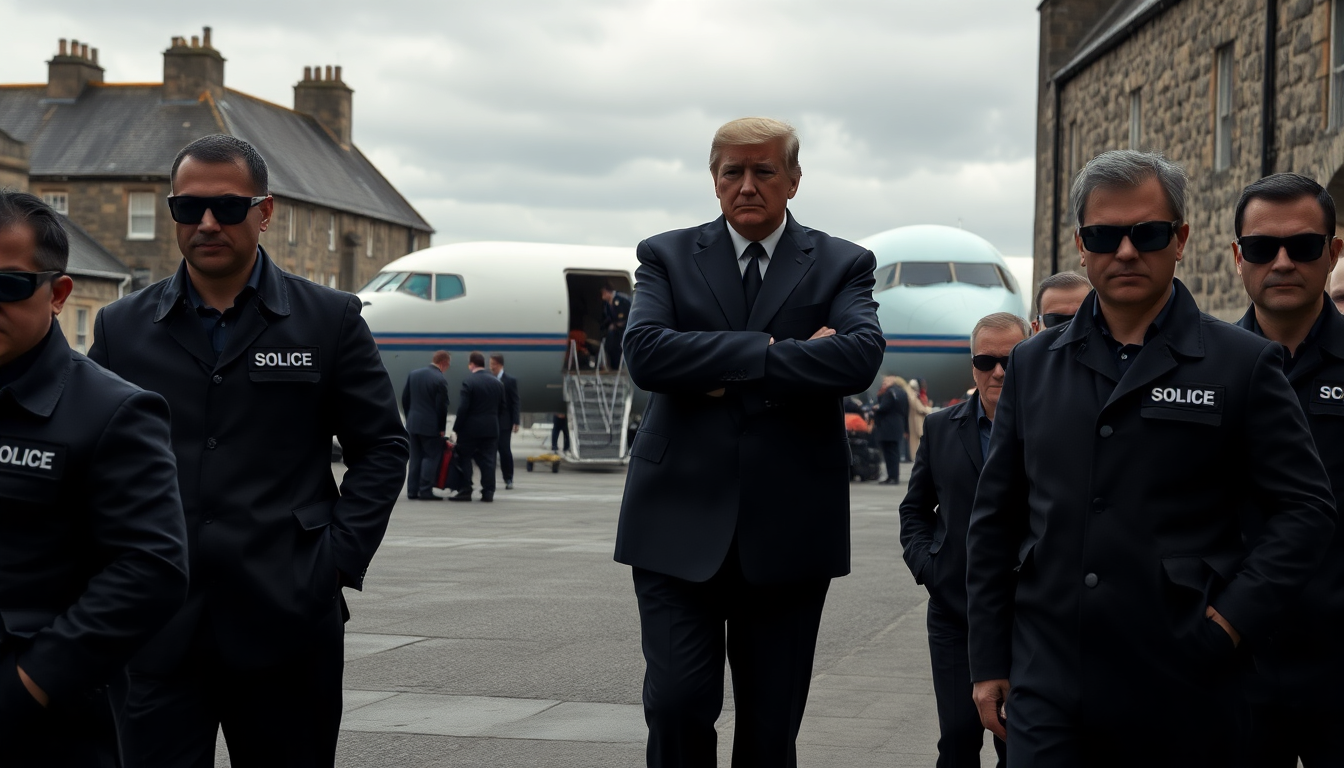Table of Contents
Recently, during a trip to Scotland, President Donald Trump found himself in a rather unusual situation involving the Secret Service. You might be wondering what exactly happened. Well, reports emerged about an agent who tried to sneak his spouse onto a government cargo plane.
Both the agency and the president had to respond to this unexpected turn of events. Let’s dive into the details of this incident, the Secret Service’s reaction, and what it means for security protocols during presidential travel.
The Incident: A Strange Encounter
While on Air Force One, President Trump referred to the situation as a “weird deal,” having just learned about it moments before talking to reporters. He casually remarked, “I just heard that two minutes ago. I think Sean’s taking care of it…”—a nod to Sean Curran, the director of the Secret Service.
This relaxed tone raised some eyebrows, suggesting that perhaps there were concerns about the agency’s internal communication and operational standards.
According to reports, a Secret Service agent allegedly tried to invite his wife, who serves in the United States Air Force, to join him on a mission support flight.
This action was clearly against agency regulations, leading to an immediate investigation. A spokesperson for the Secret Service confirmed that they were looking into the matter and assured that no protectees were on board the aircraft at the time of the incident.
But can you imagine the implications if things had gone differently?
The Secret Service has been under the spotlight since a serious security breach during a campaign rally in Butler, Pennsylvania, where there was an assassination attempt on Trump. This recent incident has only added to the scrutiny the agency faces, prompting calls for a thorough review of its protocols to ensure that they can prevent such breaches in the future.
The Aftermath: Agency Response and Changes
In response to this incident, the Secret Service is conducting a comprehensive personnel investigation. It’s worth noting that the agent involved had already been warned by supervisors about the prohibitions against such actions before the flight. Unfortunately, this isn’t an isolated case; it highlights a series of events questioning the organization’s operational integrity and decision-making process. What does this say about the agency’s standards?
Since that attempted assassination in Butler, the Secret Service has rolled out several changes to beef up security. These enhancements include using more surveillance drones, modernizing their radio communication systems, and improving coordination with local law enforcement. The agency clearly recognizes that it needs to stay ahead of evolving security threats, especially given past failures.
Moreover, this investigation is crucial for accountability and restoring public trust in the Secret Service’s ability to protect high-profile individuals. The outcomes could lead to further reforms and a reassessment of training protocols for agents. Isn’t it fascinating how one incident can spark significant changes?
Looking Ahead: The Future of Secret Service Protocols
As the investigation continues, it’s unclear how the Secret Service will address the findings and what steps they will take to prevent similar incidents in the future. One thing is certain: the agency must learn from past mistakes, especially when it comes to national security and the safety of public officials.
The recent events remind us of the challenges protective agencies face in a complex and unpredictable world. Moving forward, the Secret Service needs to prioritize transparency and accountability to rebuild trust and ensure its personnel are equipped to handle the unique demands of their roles. Can they rise to the occasion?
Ultimately, the outcome of this investigation and the agency’s subsequent actions will be under close watch by both the public and policymakers. The Secret Service’s reputation depends on its ability to adapt and respond effectively to incidents that threaten its operational integrity. Will they meet the challenge?





